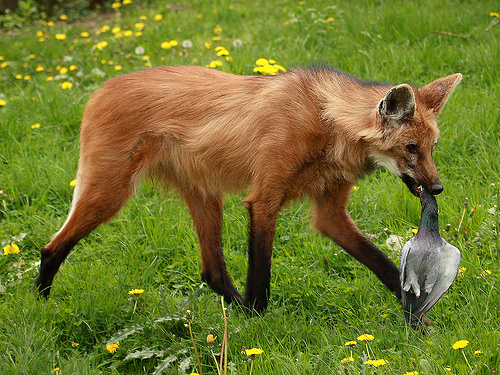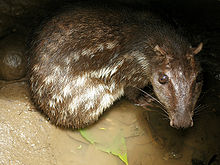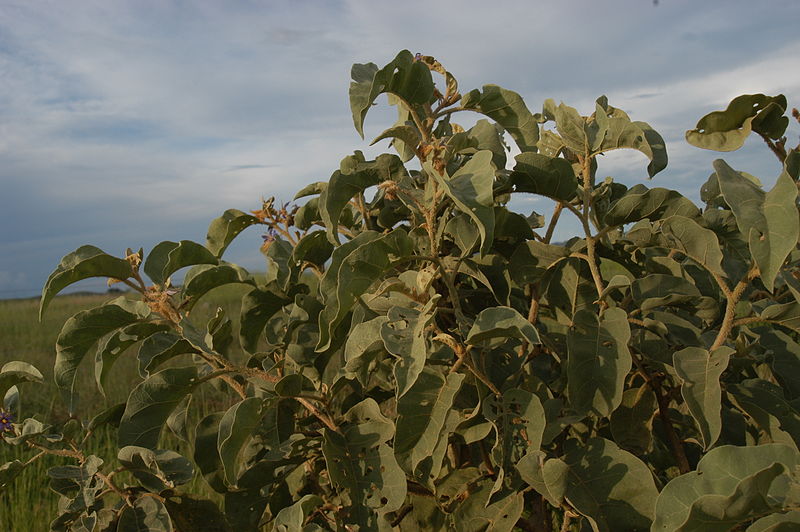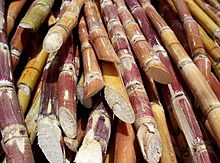What's For Dinner?
Diet and Nutrition
The maned wolf is a nocturnal animal that hunts for prey between sundown and midnight, preferring to rest during the day. When hunting every night, the maned wolf walks around 30Km (santuariodocaraca.com). The organism hunts by chasing small mammals through grass, pouncing quickly to catch the prey with the front paws, and sometimes biting the prey on the back of the neck and shaking it aggressively. The maned wolf uses piercing teeth to jibe inside the prey instead of using the claws, and the sharp teeth are essential to the animal for tearing meat. Added to that, maned wolves also have wide, flat molars used to crush fruit (cosmosmith.com). Because the organism is so tall and lean, the maned wolf has an advantage to traveling effortlessly through the tall grasses of the cerrado and also has great view, allowing the animal to find the most secretive prey. The maned wolf has an excellent sense of smell, vision, and hearing (Roy 2004). Due to the maned wolf's unusual diet, the organism is not a threat to cattle or sheep; however, sometimes the maned wolf breaks into chicken coops. (Go to Threats) Having no known predator, the maned wolf is a top predator in its habitat (denverzoo.org).

Eating mainly fruits and small vertebrates, maned
wolves are omnivores (Rodden, et al. 2008). Like all other dogs,
the maned wolf is a flesh eater; however, unlike other dogs, over half
of the maned wolf’s diet is fruit (cosmosmith.com). In numerous
studies on the diet of the maned wolf,
authors have discovered that the diet contains about 50% animal matter
and 50% plant matter. Even though the defecated samples contain about equal
amounts of matter of plants and animals, the biomass of animal
matter is typically more than the plant matter (Rodden, et al.
2008).


The maned wolf’s favorite food is the wild guinea pig, (picture above) from the family Caviidae, along with the fruit Solanum lycocarpum, (picture above) which both inhabit much of the range. (Rodden, et al. 2008, cosmosmith.com). Solanum lycocarpum, commonly called "loberia" or "wolf fruit," is a regular part of the maned wolf's diet throughout the year (Rodden, et al. 2008). Loberia looks a lot like a large tomato that turns yellow once it is ripe. It is believed that maned wolves eat the fruit before it is ripened. Also, the fruit may play a part in the interaction with a giant kidney worm, a common parasite in maned wolves (Fletchall 1995). (Go to Interactions)
 Other small mammals maned wolves consume are
mice, rats,
gerbils, spiny rats, armadillos,
rabbits, young
viscachas,
as well as fast running
pacas
(picture above) and
agoutis. (Rodden, et al. 2008,
wwf.panda.org). Other fruits and plants the organism consumes are
sugarcane
(picture at right)
and plants from the families:
Annonaceae,
Myrtaceae,
Palmae,
Bromeliaceae, Cactaceae, and
many others. Reptiles,
frogs,
fish,
snails, insects, and arthropods are also a regular part
of the maned wolf’s diet (Rodden, et al. 2008, cosmosmith.com). When at the zoo, maned wolves eat
items such as cooked vegetables and chicks or quails, along with
fruits and maned wolf chow (denverzoo.org).
Other small mammals maned wolves consume are
mice, rats,
gerbils, spiny rats, armadillos,
rabbits, young
viscachas,
as well as fast running
pacas
(picture above) and
agoutis. (Rodden, et al. 2008,
wwf.panda.org). Other fruits and plants the organism consumes are
sugarcane
(picture at right)
and plants from the families:
Annonaceae,
Myrtaceae,
Palmae,
Bromeliaceae, Cactaceae, and
many others. Reptiles,
frogs,
fish,
snails, insects, and arthropods are also a regular part
of the maned wolf’s diet (Rodden, et al. 2008, cosmosmith.com). When at the zoo, maned wolves eat
items such as cooked vegetables and chicks or quails, along with
fruits and maned wolf chow (denverzoo.org).
What maned wolves eat changes with seasonal availability of foods. Certain items such as rodents and Solanum are eaten year round, and are the most common foods consumed in both seasons (Dietz 1984). In research by M. Aragona and E. Z. F. Setz, they studied the dispersal of the seeds consumed by maned wolves and revealed Solanum lycocarpum as the most frequent plant food in the dry season. They also noted that plants in the Annonaceae and Cactaceae families are the most frequent plants ingested in the wet season, along with organisms such as beetles, rodents, and birds. Unidentified mammals were eaten by the maned wolves in the dry season (Aragona, Setz 2001).
A research experiment done by Santos, et al., from collecting the feces of maned wolves in a farmed region monthly from January to December they discovered 29 different species in the scats. 18 of the species were from animals (46%) and 11 from plants (54%). Solanum lycocarpum fruits were the dominant food item in the study (29%), and mammals followed next (13%). They also discovered arthropods, birds, and reptiles, but these items had a small percentage compared to the other food items. Lastly, they also found that arthropods and fruits were dominant in the rainy season and small mammals were dominant in the dry season. Even though the nutritional abundance is poorer in a greatly farmed region, the prominent food items were very similar compared to studies done in not as farmed areas. (Santos, et al. 2006).
In another study of the diet done by J. C. Motta-Junior and K. Martins, they found 142 different species in the scats of maned wolves that they collected. The scats had 43.8% small vertebrates, 39.5% fruits, 13% grains and stems, and 3.7% insects. Armadillos ruled the animal material, followed by rodents. The fruit items varied from 15.6% to 57.3% in each scat, and Solanum lycocarpum dominated in each of them, varying from 4.8% to 53.4% of the entire biomass. Annonaceae, Myrtaceae and Solanacea fruits were found in all the sites studied. This study contradicted the fact that the consumption of Solanum lycocarpum fruits were consumed year round and it does not matter which season it is, for they discovered that small mammals and Solanum lycocarpum were mainly consumed only in the dry season, while other fruits were mostly eaten in the rainy season (Motta-Jr., Martins 2002).
To find out how maned wolves
reproduce, go to Reproduction.
Back to HOME
